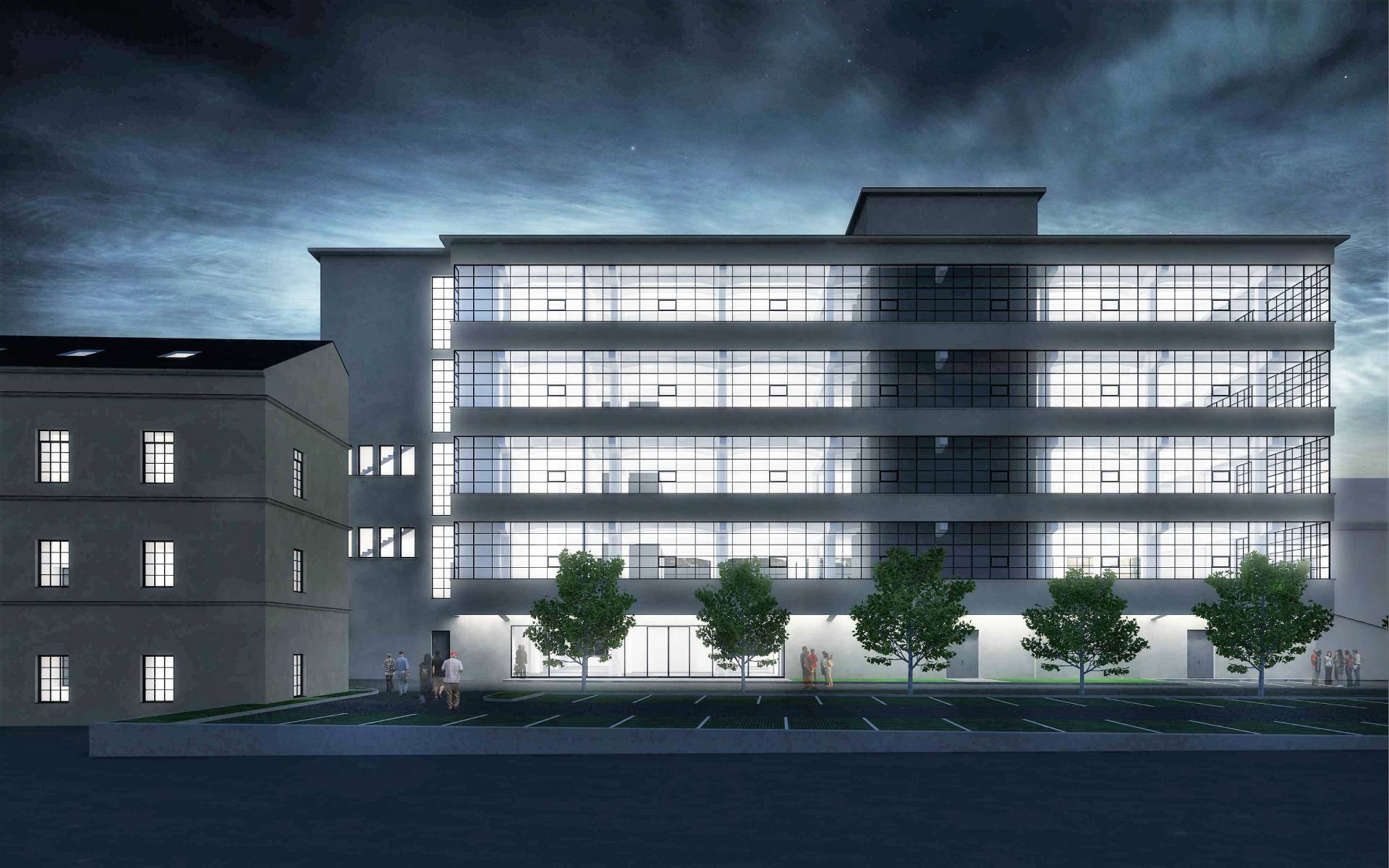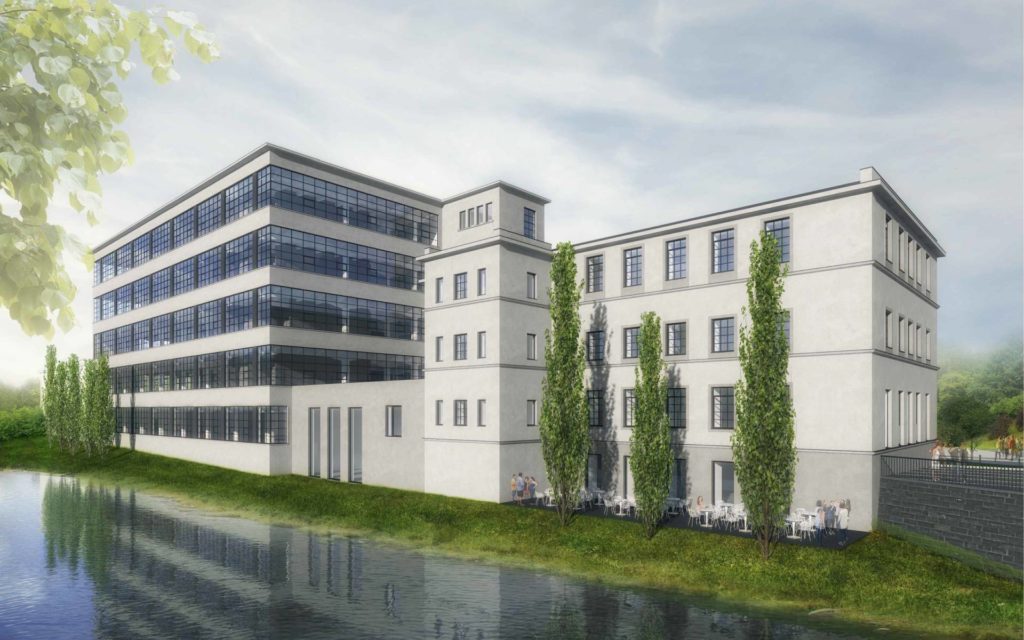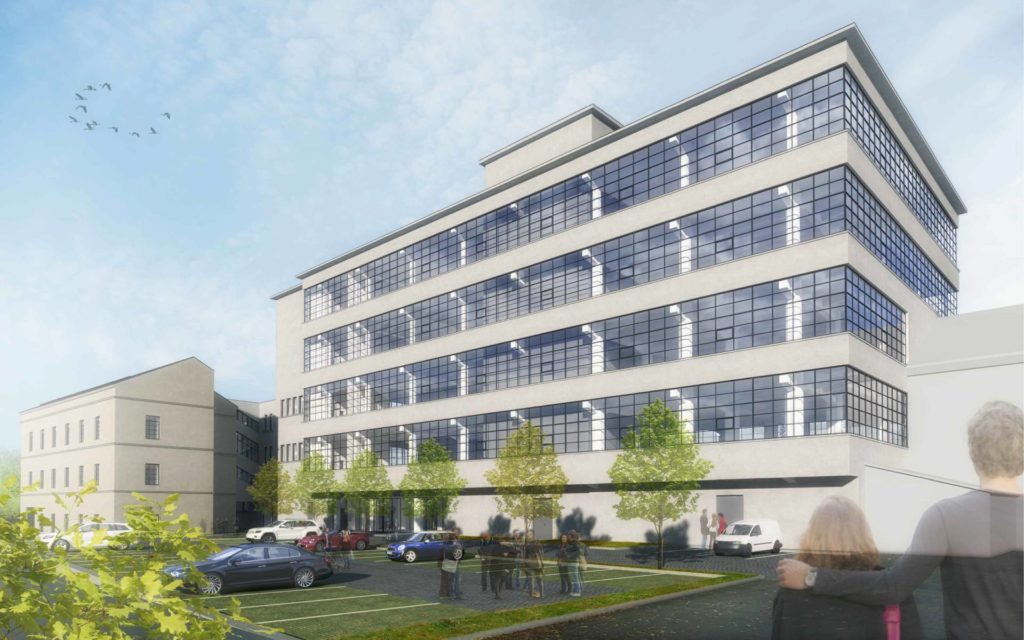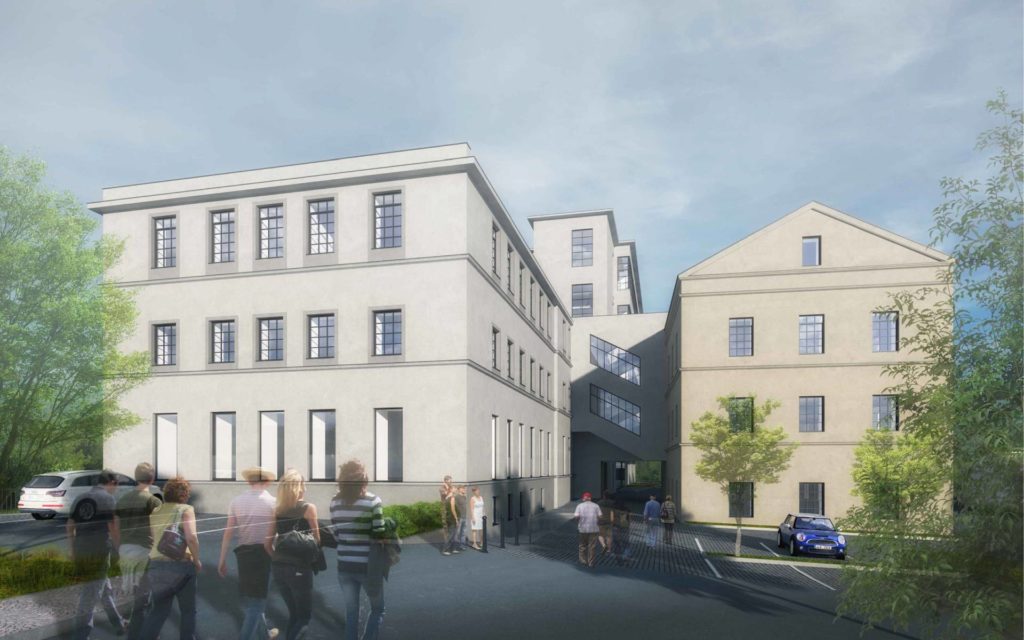Technological park

Type
Office buildings
Place
Strakonice
Year
2017
We have equipped
Instead of textile machines, computers and laboratories
Textile factories were once the pride of the republic. With the opening of the borders and the arrival of foreign products, the Czech textile industry rapidly declined. Many textile factories became abandoned buildings crying out for rescue. The Strakonice spinning mill has a similar story: but fortunately with a good end in sight…
The Strakonice spinning mill was built in 1938 as an industrial facility for textile production. It was last used in 2011 as an artificial fur production facility. For the last few years, this five-storey glass building in functionalist style has been losing its soul and slowly deteriorating.
But the city council has decided to save the building. Our goal was to design its transformation into a “science and technology park” with a multifunctional space for education or exhibitions. In the space of the former textile factory, technical education should meet with facilities for start-ups or companies focused on high added value, innovation and research.
The spinning mill site consists of two buildings connected by a staircase. Both buildings represent the construction of a 19th century industrial textile factory. The main building draws attention to itself with its dominant five-storey part built in the spirit of functionalism – it is characterised by the open layout of the hall spaces of individual floors, a column skeleton system or continuous strip windows.
When designing the architectural solution, we placed emphasis mainly on preserving the forms of the individual buildings and supporting their functionalist expression. Our aim was also to make use of the open layout, to connect the interior with the exterior through the use of views and to acknowledge and support industrial design as much as possible.


